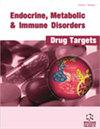Novel Finding of Micropenis Caused by Mutation of the ADGRG2 Gene: A Case Report and Literature Review
IF 2
4区 医学
Q3 ENDOCRINOLOGY & METABOLISM
Endocrine, metabolic & immune disorders drug targets
Pub Date : 2024-02-16
DOI:10.2174/0118715303282511240206105343
引用次数: 0
Abstract
Background: This study reported a case of micropenis caused by a novel hemizygous mutation in the ADGRG2 gene, which aimed to expand the understanding of sexual dysplasia caused by ADGRG2 gene mutation. Case Presentation: We present the clinical data and genetic test results of a patient with micropenis admitted in September, 2022, to the Tongji Hospital. The patient was a 9-year-10- month-old male whose chief complaint was the presence of a short penis over a period of three years. In April 2016, the patient underwent corrective surgery for a clubbed penis. Upon admission to the study hospital, his height and weight were 145.0 cm (75-90th percentile) and 37.8 kg (50-75th percentile), respectively, and his BA was 12 years old. His physical characteristics included a normal face, bilateral testicle size of 2 ml, and penile length of about 3 cm. A gonadotrophin-releasing hormone-stimulating test revealed normal hypothalamic-pituitary-gonadal axis function. An HCG stimulation test indicated normal sperm production in the testis. Key abnormalities from auxiliary examinations included low testosterone and high ACTH, dehydroepiandrosterone sulfate, androstenedione, and 17-OH-P levels. Genetic testing revealed a new hemizygous mutation, a splicing mutation in intron 4 of the ADGRG2 gene (ChrX: 19040187 (NM_001079858.3): c.154 + 2T > A, inherited from the mother. Conclusion: This study reported a case of micropenis caused by a new hemizygous mutation in the ADGRG2 gene. This indicates the importance of genetic testing and gene-guided treatments to improve prognosis.由 ADGRG2 基因突变引起的小阴茎症的新发现:病例报告和文献综述
研究背景本研究报告了一例由 ADGRG2 基因新型半杂合子突变引起的小阴茎症,旨在扩大对由 ADGRG2 基因突变引起的性发育不良的认识。病例介绍:我们介绍了同济医院于2022年9月收治的一名小阴茎患者的临床资料和基因检测结果。该患者是一名 9 岁至 10 个月大的男性,主诉是阴茎短小,已持续三年。2016 年 4 月,患者接受了阴茎短小矫正手术。入院时,他的身高和体重分别为 145.0 厘米(百分位数第 75-90 位)和 37.8 千克(百分位数第 50-75 位),文学学士 12 岁。他的身体特征包括面容正常,双侧睾丸大小为 2 毫升,阴茎长度约为 3 厘米。促性腺激素释放激素刺激试验显示他的下丘脑-垂体-性腺轴功能正常。HCG刺激试验显示睾丸的精子生成正常。辅助检查发现的主要异常包括睾酮偏低,促肾上腺皮质激素、硫酸脱氢表雄酮、雄烯二酮和 17-OH-P 水平偏高。基因检测发现了一个新的半杂合子突变,即 ADGRG2 基因内含子 4 的剪接突变(ChrX: 19040187 (NM_001079858.3):c.154 + 2T >A,遗传自母亲。结论本研究报告了一例由 ADGRG2 基因新的半杂合子突变引起的小阴茎症。这表明基因检测和基因指导治疗对改善预后的重要性。
本文章由计算机程序翻译,如有差异,请以英文原文为准。
求助全文
约1分钟内获得全文
求助全文
来源期刊

Endocrine, metabolic & immune disorders drug targets
ENDOCRINOLOGY & METABOLISMIMMUNOLOGY-IMMUNOLOGY
CiteScore
4.60
自引率
5.30%
发文量
217
期刊介绍:
Aims & Scope
This journal is devoted to timely reviews and original articles of experimental and clinical studies in the field of endocrine, metabolic, and immune disorders. Specific emphasis is placed on humoral and cellular targets for natural, synthetic, and genetically engineered drugs that enhance or impair endocrine, metabolic, and immune parameters and functions. Moreover, the topics related to effects of food components and/or nutraceuticals on the endocrine-metabolic-immune axis and on microbioma composition are welcome.
 求助内容:
求助内容: 应助结果提醒方式:
应助结果提醒方式:


